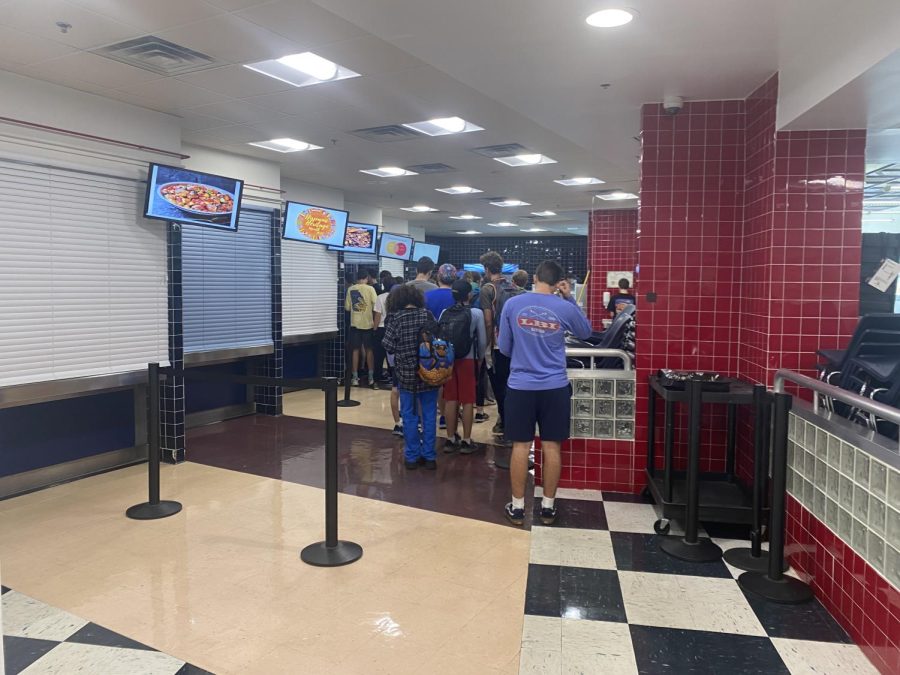Lunch prices rise at JDS due to supply chain issues, inflation
Students waiting in line for school lunch in the Cafeteria
September 28, 2022
Food prices across America have spiked over the last year due to an array of reasons including inflation, shortage of truck drivers and the coronavirus. CESJDS has been largely able to stave off these price spikes, but starting this school year JDS has had to make some tough decisions relating to the food services program.
JDS’s most controversial decision regarding the cafeteria was its choice to raise the price of school lunches to $10.50 from their original price of $8.50. For teachers, the price for school lunch went up from $5 to $7.50. The price change has been a hot topic in the JDS community.
Shoshanna Schechter (‘98), parent of junior Netanya Shaffin and seventh grader Keeny Shaffin, has been especially vocal about the change in price.
“When we saw the prices were raised to over 10 dollars a meal, that was a huge wake up call because even though it may not be a huge change from the previous year, over 10 dollars, that is a big difference and it makes you think about how you are spending your money especially with inflation,” Schechter said.
Schechter added that there could have been many different solutions that JDS could have pursued including buying in a “bulk order” or “having people order in advance.”
“It would have been really great for maybe JDS either to tighten the belts and find menus that are more cost effective or find a method that would be more cost-effective to deliver a product that doesn’t need to be gourmet,” Schechter said.
A big reason why the lunch price has gone up stems from skyrocketing food prices across the United States. According to the United States Bureau of Labor Statistics, from August 2021 to August 2022, the Consumer Price Index for food went up 11.4%, the largest 12-month increase since1979.
“Everything has gone up. It’s [food prices] basically have gone up 50% over last year,” Director of Food Services Mark Glauser said.
Glauser used fryer oil and mayonnaise as examples of prices that have gone up, as fryer oil has increased from $19/gallon to $35/gallon and mayonnaise from $23 to $60 per case over the past year. In addition to the rise in food prices for JDS, the kitchen also has to account for keeping kosher which makes food even pricier because the food has to be kosher-certified.
Because the ingredients in the hot lunch are mostly the items going up in price, Glauser said that JDS has in turn expanded their “grab n’ go” snack options and packaged sushi and wraps, which are easier to buy and sell for JDS. Some of the snacks JDS has added to their “grab n’ go” menu include apples($1), popcorn ($1.50) and yogurt parfaits ($1.50).
“I have noticed that because of the new snack options and stuff, a lot more people are buying sushi and snacks rather than normal hot lunch,” seventh grader Sami Goldin said.
While a big factor driving the higher lunch prices is rising ingredient prices, it isn’t the only reason behind the price hike.
“Prices have gone up. And that’s from a lot of different reasons. It could be from all our vendors have added upcharges, which they didn’t before. A year ago or even two years ago, you wouldn’t be charged for gas,” Glauser said, “Now for every delivery you order, they are charging between $10 to $20 just for gas when they’re delivering you a service charge.”
Because of the rise in school lunch prices at JDS, Glauser said that many students have stopped buying lunch.
“Last year we had 450 students eating on the day we had chicken tenders, which was a popular day. This year we might have 200 students,” Glauser said
But Glauser said that the school has been looking for ways to make the lunch price more bearable for families.
“My outlook on this is we’re always trying to help, always trying to add other alternatives such as special menus,” Glauser said. “Our CFO is looking into trying to roll the price of the lunch program into tuition.”








